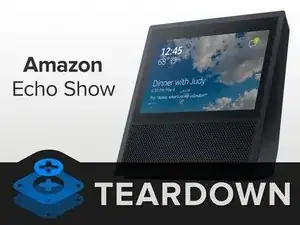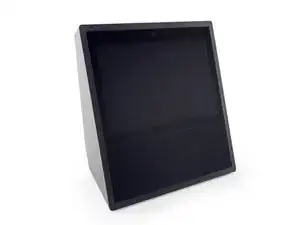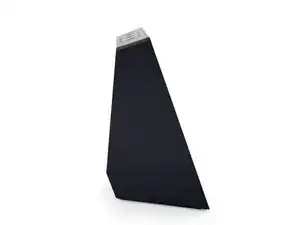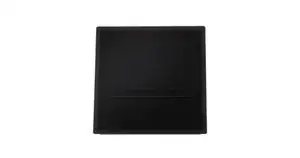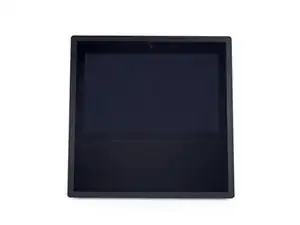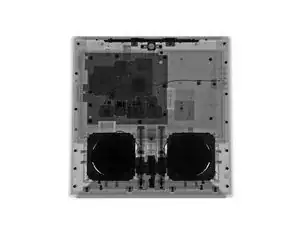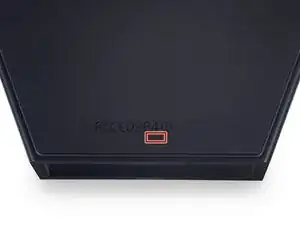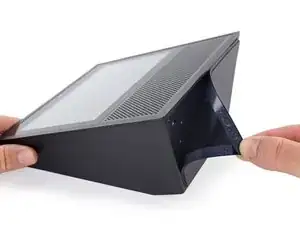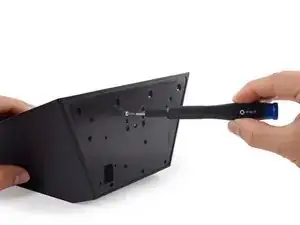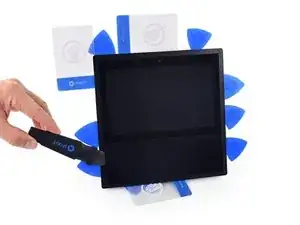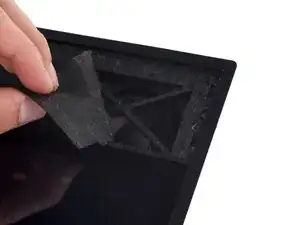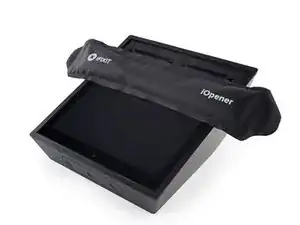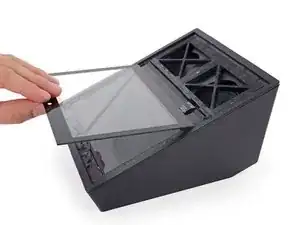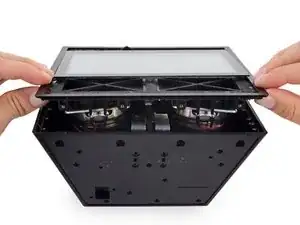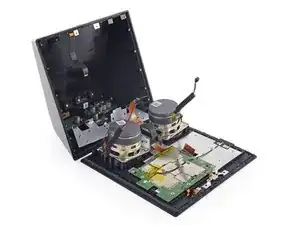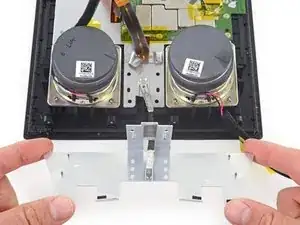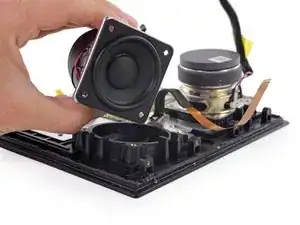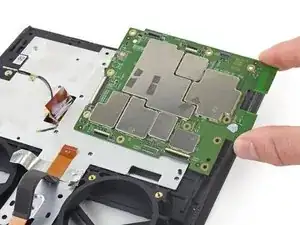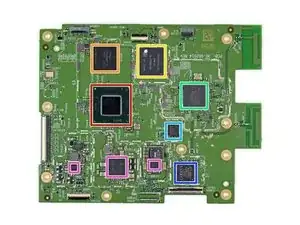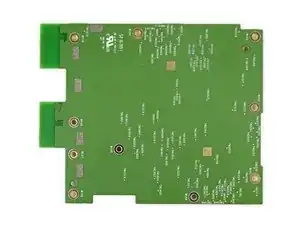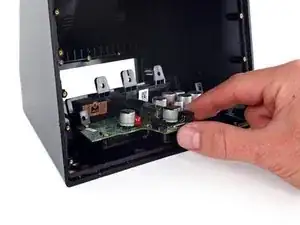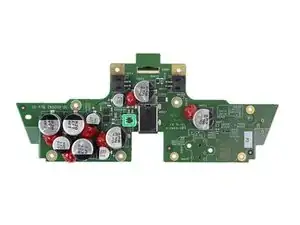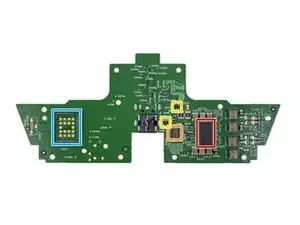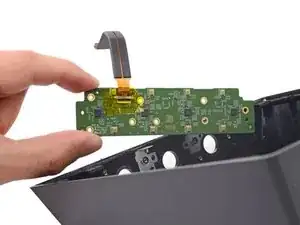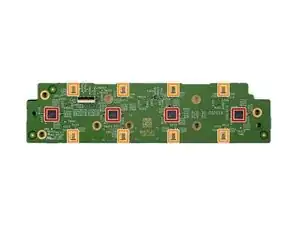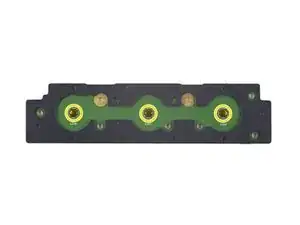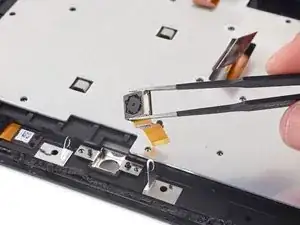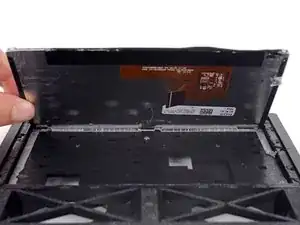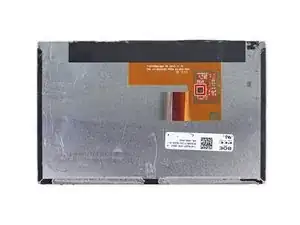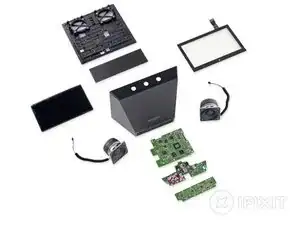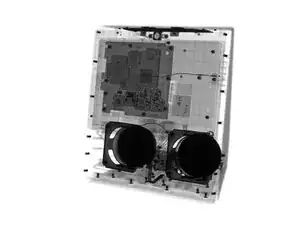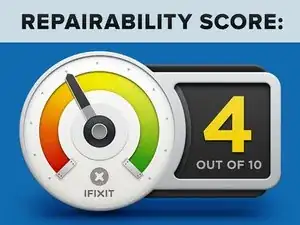Einleitung
Is there an echo in here? Seems like Alexa's talking to us from a lot of devices now. The new Echo Show adds a screen to bring even more Alexa, and now she watches you while she listens. Creepy? Maybe. A little endearing? Okay yeah, a little. Hey Alexa, let's Drop In on another teardown!
Want to see our teardowns before anyone else? Of course you do! Sign up for our news list here and get teardowns delivered to your inbox before anybody else.
And if you can't get enough teardown, here's where to get more: Follow us on Facebook, Instagram, or Twitter for the latest teardown news.
Werkzeuge
-
-
Let's see if Amazon's newest Echo can Show us somethin' good. Here are the tech specs:
-
7-inch touchscreen display with 1024 × 600 resolution
-
Dual 2-inch stereo speakers
-
Intel Atom x5-Z8350 (2M cache, up to 1.92 GHz) processor
-
5 MP front-facing camera
-
8-microphone array
-
-
-
The star of the Show is its 7-inch, 1024 × 600 touchscreen display.
-
Or maybe they just needed to get rid of some Fire Tablet displays...
-
The back and top of the Show share some similarities with the old Echo devices: physical volume and microphone/camera on/off buttons.
-
In a wild departure from the cylindrical Echo shapes of yore, the Show looks closer to something out of Star Trek.
-
-
-
After bringing the Show around town, we look right through it to find—big ol' speakers and a circuit board.
-
The rubber foot holds FCC info, and seems like a likely point of entry.
-
It also bears the model number MW46WB.
-
-
-
So, like most Echo devices, we start from the bottom. After peeling up the taped-in rubber foot, we spy a handful of T5 Torx screws...
-
But with all screws dispatched, there are no seams—we seem to be ... screwed ... for now.
-
We immediately hunt for new ingress points.
-
-
-
Lacking any action on the foot, we start to pry around the display.
-
And then we keep prying.
-
... and prying ...
-
It turns out the multitude of screws at the bottom was a
redgreen herring—the speaker grille is the real ingress point. -
Tucked under the grille, we find some sound-dampening fabric (just like the stuff rolled around the original Echo) and some more screws.
-
But still no dice removing that front panel—time to get to work on what looks like the digitizer. iOpener, engage!
-
-
-
We lift the digitizer to reveal ... more screws under the bezel! Unsurprisingly, the digitizer cable disappears into the frame, holding the digitizer captive for now.
-
Fortunately we can free the front frame, under which Amazon hid some hefty speakers.
-
Our hard work and early screw removal pay off! Finally, we get to see what this Echo has to Show for itself.
-
-
-
Alexa's new form is powerful. How powerful? Well, the wall adapter outputs 15.0 VDC at 1.4 A, meaning there is 21 W driving Alexa ...
-
Someone needs to pull Alexa back down to earth, and luckily we spot a burly braided cable grounding the Show.
-
That juice is going somewhere, and it looks like those upgraded speakers are thirsty.
-
And check out those magnets.
-
-
-
Out comes the main board, hiding its chips under an inscrutable jigsaw puzzle of EMI shields. After we pop the lids, it's time for Show and tell:
-
Intel SR2KT Atom x5-Z8350 Processor (2M Cache, up to 1.92 GHz)
-
SK Hynix H9CCNNNBKTMLBR-NTD 2 GB RAM
-
Sandisk SDIN9DS2-8G 8 GB NAND embedded flash drive
-
Cypress Semiconductor (formerly Broadcom) BCM43570KFFBG 5G Wi-Fi IEEE 802.11ac 2×2 MAC/baseband/radio with integrated Bluetooth 4.1 and EDR
-
Winbond W25Q16FW 1.8V 16 Mb serial flash memory
-
Goodix GT9271 10-point capacitive touch controller
-
Texas Instruments SND9039A2 power management, Monolithic Power Systems MP8762 10 A step-down converter, and Novatek NT50167 display power management
-
-
-
Next we get to pop out the power supply board. We deal with so many mobile devices, it's almost novel to see this tiny li'l guy.
-
Looks like a party with some cans and some chips:
-
Texas Instruments TPA3118 30-W stereo (BTL) class-D audio amplifier
-
Wolfson WM8904G ultra-low-power codec for portable audio applications
-
Rohm BU4831F 3.1 V voltage detector
-
Rohm BU4813F 1.3 V voltage detector
-
There's also an array of contacts (accessible via the Show's rubber foot), likely for testing purposes.
-
-
-
We pull the final board from the top of the Show, and find the expected hardware—buttons, lots of microphones, and some ADCs to funnel your voice from the microphones to the CPU:
-
Texas Instruments TLV320ADC3101 92 dB SNR Low-Power Stereo ADC (x4) as seen in the Echo and Echo Dot
-
Knowles MEMS Microphone (x8)
-
Switch (x3)
-
Fun fact: all that foam tape minimizes vibration noise so that Alexa still has a chance of hearing you during loud music sessions.
-
-
-
Turning our attention to the "show" part of the Show, we easily pluck the 5-megapixel
spycamera from the display assembly (after bending a bracket out of the way). -
The display itself is another matter. It's guarded by some impossibly tough foam tape that basically requires you to break the display rather than lift it out. So first we did the former, then the latter.
-
The panel is model TV070WSM-NMO, manufactured by BOE.
-
A Richtek LED backlight driver sits on the flex cable.
-
-
-
The Show is now an empty, echoing cave, its components laid bare. We're free!
-
Once again, thanks to our superpowered friends at Creative Electron for helping us see the unseen!
-
-
-
Amazon Echo Show Repairability Score: 4 out of 10 (10 is easiest to repair)
-
The Echo Show only uses standard T5 and T6 Torx screws.
-
While they may not get much wear, the most wear-prone components (buttons and power jack) are soldered to boards, complicating replacement.
-
The digitizer is not fused to the display, but must be pried up from tough adhesive to do any repair.
-
The display is adhered very tightly in the midframe, and is difficult to remove without damage.
-
Any repair is going to require cutting through and replacing lots of tough adhesive.
-
17 Kommentare
Just a tablet without a battery and oversized speakers. Rather overpriced.
There seems to be minimal to no heatsinking for the processor, compared to other devices with a similar chip.
This is because Intel Atom series processors are meant for budget, ultra-low power setups. In small netbooks where heat matters over performance, such as the Echo Show, cheap processors that cannot do absolutely anything else are ideal.
i agree, on the surface the Show is overpriced but you aren't just paying for the hardware. You have to employ the people creating the infrastructure behind it. i purchased a Show for my elderly parents. my mom gets frustrated with computers including her tablet. She ends up pressing the wrong button or something. so having an interface and the supporting infrastructure that amazon is assembling makes a big difference.
